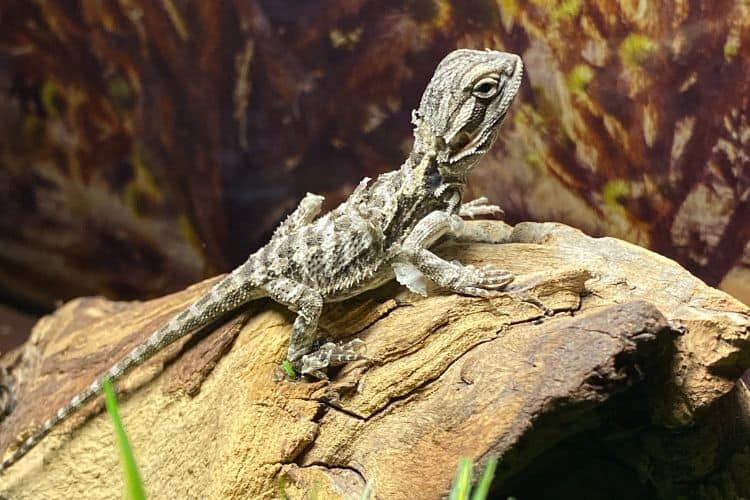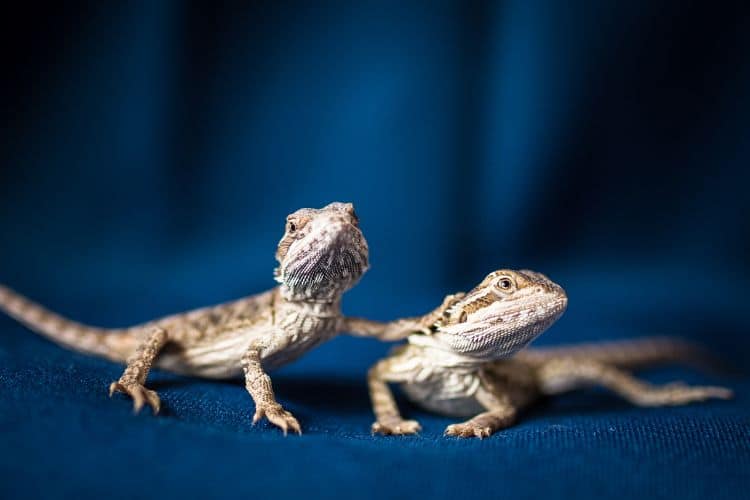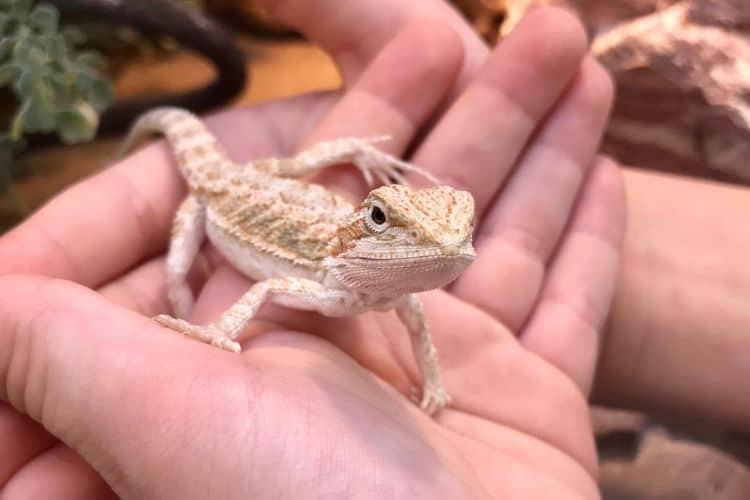Bearded dragons, beloved for their charismatic personalities and unique appearance, are fascinating reptiles that require attentive care to thrive.
One essential aspect of their care is understanding brumation, a natural process similar to hibernation that many reptiles, including bearded dragons, undergo.
In this post, we’ll delve into the intricacies of brumation specifically concerning baby bearded dragons, providing a clear-cut answer to the question: do baby bearded dragons brumate?
What Exactly Is Brumation?
Brumation is a physiological state that’s very similar to hibernation observed in many reptiles during colder months. It serves as a mechanism for conserving energy and surviving periods of environmental stress, such as the colder months of the year temperatures and food scarcity.
During the deep sleep that the brumation process entails, metabolic rates decrease, and activity levels diminish significantly, which allows reptiles to endure harsh conditions. There’s also a loss of appetite.
Do Baby Bearded Dragons Undergo Brumation?
While brumation is more commonly associated with adult bearded dragons, baby beardies can also enter this state, albeit less frequently and for shorter durations. Factors influencing brumation in baby bearded dragons include age, environmental cues, and overall health.
Understanding the signs of brumation in baby bearded dragons is crucial for providing appropriate care during this extended period, as young bearded dragons may exhibit different brumation patterns compared to adults.

Age-related considerations, such as developmental stage and size, can influence the onset and duration of brumation. Additionally, environmental factors, including temperature fluctuations and daylight cycles, play a significant role in triggering brumation in baby beardies.
Monitoring their health and behavior during brumation is essential to ensure their well-being. Creating optimal environmental conditions is equally important when managing brumation in baby bearded dragons.
Providing appropriate lighting, temperature gradients, and hydration sources mimics their natural habitat and supports their physiological needs during brumation. As a responsible pet owner, you have to adjust your care practices accordingly and seek veterinary guidance if concerns arise.
The duration and frequency of brumation can vary among baby bearded dragons. While some may experience brief periods of torpor lasting a few weeks, others may enter deeper brumation for several months.
Also Read: Why Is Your Bearded Dragon Sleeping in the Corner? (8 Reasons)
Care Tips During Brumation for Baby Bearded Dragons
During the brumation period, it’s essential to provide attentive care to ensure the well-being of baby bearded dragons. Here are some comprehensive care tips to consider:
Maintain Optimal Environmental Conditions
- Ensure proper temperature gradients within the enclosure, with cooler areas for resting and warmer spots for basking.
- Use a thermostat to regulate temperature levels and prevent fluctuations that may disrupt brumation.
- Provide adequate lighting with a UVB source to support vitamin D synthesis and overall health.
Minimize Disturbance and Handling
- Limit handling and interaction with the bearded dragon to minimize stress during brumation.
- Create a quiet and undisturbed environment by placing the enclosure in a low-traffic area away from noise and disruptions.
Offer Occasional Hydration and Nutrition
- Provide shallow water dishes for hydration, ensuring they are easily accessible but shallow enough to prevent drowning.
- Offer occasional misting or gentle spraying to provide hydration without disturbing the dragon’s rest.
- Offer small amounts of food periodically, such as gut-loaded insects or leafy greens, to maintain nutritional intake. However, avoid overfeeding, as digestion slows during brumation.

Monitor Health and Behavior
- Regularly observe the baby bearded dragon for any signs of illness or distress, such as weight loss, lethargy, or abnormal behavior.
- Keep track of brumation patterns, including duration and frequency, to identify any deviations or concerns.
- Seek veterinary guidance if you notice any significant changes in behavior or health during brumation.
Provide a Secure Enclosure
- Ensure the enclosure is secure to prevent escapes and potential injuries, especially during periods of decreased activity.
- Check enclosure fixtures, such as heating elements and lighting, regularly to ensure they are functioning correctly and safely.

Maintain Cleanliness
- Keep the enclosure clean by regularly removing waste, uneaten food, and any debris that may accumulate.
- Monitor humidity levels to prevent excessive moisture buildup, which can lead to respiratory issues.
Wrapping Up
Brumation is a natural process observed in all bearded dragons, albeit less frequently in baby beardies than in adults. By understanding the intricacies of brumation and implementing appropriate care practices, you can ensure the well-being of their young beardie.
Remember, responsible reptile ownership involves attentive observation, environmental management, and seeking veterinary guidance when necessary, ultimately fostering a rewarding relationship with these captivating creatures.
Also Read: Why Is My Bearded Dragon Hiding? (8 Reasons)

